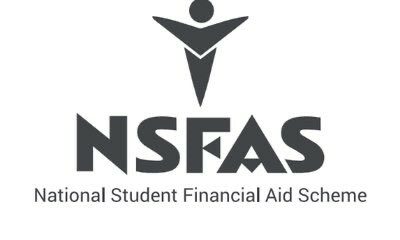News
Half of Matrics Face Shut-Out: Manamela Pushes for Skills Over Degrees in SA’s Future

South Africa’s education system is once again staring down the numbers game. With nearly 856,000 matric learners expected to write their final exams this year, Higher Education Minister Buti Manamela has admitted that the country’s post-school sector will only absorb about half of them in 2026.
That stark reality was laid bare at a media briefing in Pretoria on Monday, where Manamela urged South Africans to rethink the obsession with university degrees and embrace hands-on skills as the real drivers of the country’s future.
Only Half Will Make It In
According to Manamela, public universities will be able to take in around 235,000 first-year students in 2026, while 170,000 spaces will be available at Technical and Vocational Education and Training (TVET) colleges, and 120,000 at Community Education and Training (CET) colleges. Together, that’s just over 525,000 spacesleaving hundreds of thousands of hopeful matrics with limited options.
“The reality is that about 850,000 young people will be sitting for exams. If all of them pass, we can only guarantee that the system will absorb half of those,” he said, adding that solutions for the rest must be urgently considered.
Gap years, job-hunting, or informal training may be fallback options, but with youth unemployment stubbornly sitting above 40%, those paths are far from easy.
A Push for Skills, Not Just Degrees
Manamela’s strongest message was clear: the country cannot rely solely on universities to fuel its development. “Universities will give us the professionals, but the future of the country lies in artisans, apprentices and people with skills who can lay bricks, who can do plumbing and welding,” he stressed.
This is not a new refrain. South Africa has long struggled with a mismatch between qualifications and the job market. While graduates in some fields struggle to find work, industries like construction, plumbing, and welding are desperate for qualified workers. Employers regularly complain about the shortage of artisans, even as millions of young South Africans remain unemployed.
Manamela suggested that shifting resources and attention toward technical training is cheaper, more practical, and far more likely to result in employment.
Nsfas Opens Amid Mounting Strain
On the funding front, Manamela confirmed that Nsfas applications open this week, closing on 15 November. With the scheme already stretched, he announced the reallocation of R13.3 billion from the department’s budget to cover shortfalls, clearing the way for blocked registrations and unpaid accommodation providers.
But Nsfas’s challenges are far from over. The scheme now requires around R75 billion annually to meet growing demand. Rising costs of living, broader eligibility criteria, and more students qualifying have pushed it into a financial corner. While temporary solutions have been found, Manamela hinted at “sustainable funding reforms” still to be announced later this year.
A “War Room” for Crises
Manamela also announced a new “war room” to respond quickly to issues that threaten to derail the academic year. This intervention aims to cut through bureaucratic delays by offering fast decision-making and direct communication with institutions and students.
From late Nsfas payments to student accommodation disputes and delayed exam certificates, the war room will serve as an “early-warning system” to prevent protests and disruptions that have become familiar features of the academic calendar.
At the Media Briefing today, Minister @ButiManamela announced that NSFAS 2026 applications officially open on 16 Sept at the University of Pretoria. Apply via myNSFAS, track online, and access support at regional centres. NSFAS supports ~1 million students annually.@myNSFAS pic.twitter.com/eko0R7JVBE
HigherEducationZA (@HigherEduGovZA) September 15, 2025
Public Reaction: A Familiar Debate
Manamela’s comments have reignited a debate that plays out on social media every year: the tension between academic prestige and practical skills. On X (formerly Twitter), many young people expressed frustration that access to university remains limited, while others supported the push for technical training, arguing that degrees without jobs are a “false promise.”
Education experts also weighed in, noting that while shifting focus to skills is crucial, South Africa must invest more seriously in making TVET and CET colleges attractive, properly resourced, and aligned with industry demand. Too often, these institutions are viewed as a “last resort,” rather than the first choice they are in many developed economies.
A System Under Pressure
South Africa’s post-school education system is in a bind: trying to expand opportunities while grappling with financial shortfalls, high dropout rates, and the sheer scale of demand. Manamela admitted that while access has grown, success has lagged, with first-year dropout rates still alarmingly high.
His proposal to make university throughput rates as transparent as matric pass rates could be a game-changer in holding institutions accountable. It would also shift the conversation from access alone to outcomesa sorely needed perspective.
At its core, the crisis in higher education is about more than numbers. It’s about dignity, opportunity, and the direction of South Africa’s economy.
Manamela’s message that artisans, plumbers, and welders are as vital to the nation’s progress as engineers and doctors, may be controversial, but it’s grounded in economic reality. Without skilled hands, infrastructure projects stall, industries crumble, and unemployment deepens.
The real test will be whether government, industry, and communities can work together to ensure that when half of matrics are shut out of universities, they aren’t simply shut out of the future.
{Source: The Citizen}
Follow Joburg ETC on Facebook, Twitter , TikTok and Instagram
For more News in Johannesburg, visit joburgetc.com



























